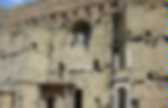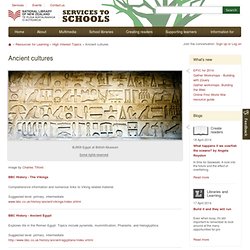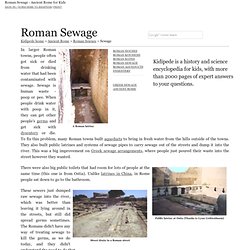

Maps. Italy was certainly influenced by many powerful cultures and political forces over time, including the Byzantines, Etruscans and Greeks, but it was the world-changing impact of both the Roman civilization and the Italian Renaissance that contributed most-significantly to its status in the modern world.

The Roman Republic originated in 510 BC and many powerful Emperors would rule its territories. It was during the life of Julius Caesar (100 BC-44 BC) that the Roman Empire began its total domination of the Mediterranean area and parts of central Europe. Its powerful legions swept across the lands and seas and no one could match the strength of its armies. The pages of history are replete with seemingly invincible cultures that eventually faded away, and the Roman Empire was no different. Centuries of invasions and assorted wars continued here throughout the Middle Ages; small cities emerged; regional powers developed, and Genoa and Venice created vast commercial empires. Ancient Cultures. Image by Charles Tilford BBC History - The Vikings Comprehensive information and numerous links to Viking related material.

Suggested level: primary, intermediatewww.bbc.co.uk/history/ancient/vikings/index.shtml BBC History - Ancient Egypt Explores life in the Roman Egypt. Suggested level: primary, BBC Schools - Ancient Greece Cartoons and comics add to the fun of learning about aspects of life in Ancient Greece. Suggested level: primary, intermediatewww.bbc.co.uk/schools/ancientgreece/main_menu.shtml BBC Schools – Ancient Rome.
Primary History - Romans. Roman Art. As of July 1, 2013 ThinkQuest has been discontinued.

We would like to thank everyone for being a part of the ThinkQuest global community: Students - For your limitless creativity and innovation, which inspires us all. Teachers - For your passion in guiding students on their quest. Partners - For your unwavering support and evangelism. Parents - For supporting the use of technology not only as an instrument of learning, but as a means of creating knowledge. We encourage everyone to continue to “Think, Create and Collaborate,” unleashing the power of technology to teach, share, and inspire. Best wishes, The Oracle Education Foundation. Housing. Ancient Rome As of July 1, 2013 ThinkQuest has been discontinued.

We would like to thank everyone for being a part of the ThinkQuest global community: Students - For your limitless creativity and innovation, which inspires us all. Teachers - For your passion in guiding students on their quest. Partners - For your unwavering support and evangelism. Parents - For supporting the use of technology not only as an instrument of learning, but as a means of creating knowledge.
We encourage everyone to continue to “Think, Create and Collaborate,” unleashing the power of technology to teach, share, and inspire. Best wishes, The Oracle Education Foundation. Encyclopedia - Britannica Online Encyclopedia. Roman Clothing. Roman clothing owed much to that of ancient Greece, but it had distinct forms of its own.

In all the ancient world, first and foremost clothes needed to be simple. As for possible materials there was only really one. Wool, although to some extent linen was also available. The needles of the day were coarse and unwieldy by modern standards. Hence any stitching or sewing was kept to a minimum. Underwear As undergarments Romans would wear a simply loin cloth knotted on each side. Undergarments are believed to generally have been of linen. The Tunic So a senator could wear a tunic featuring a vertical broad purple stripe down the centre. It is worth mentioning the tunica palmata which was a brightly coloured tunic embroidered with palm leaves and was worn by the triumphator during his triumph, or possibly by other dignitaries at other, very exceptional occasions.
Interactive Colosseum Structure. Roman Aqueducts - Ancient Rome for Kids! As Roman towns got bigger, in the course of the Roman Republic, it got too hard for the people who lived in the towns to get drinking and washing water.

Because raw sewage was draining into the rivers, people who drank river water often got very sick or died. Local governments, first in the city of Rome and then elsewhere in the growing Empire, decided to build long stone channels to carry clean water from nearby hills to the towns. This is an aqueduct of the city of Rome: Aqueduct in the city of Rome These were called aqueducts (ACK-wa-ducts), from the Latin word for water (aqua) and the Latin word for channel (ductus).
The aqueduct at Nimes, in southern France (Pont du Gard) These aqueducts were quite a challenge to build. More about Roman Aqueducts (page two) To find out more about Roman aqueducts, check out these books from Amazon.com or from your library: Roman Roads and Aqueducts, by Don Nardo (2000). City : A Story of Roman Planning and Construction, by David Macaulay (1983).
Roman Sewage - Ancient Rome for Kids! A Roman latrine In larger Roman towns, people often got sick or died from drinking water that had been contaminated with sewage.

Sewage is human waste - poop or pee. When people drink water with poop in it, they can get other people's germs and get sick with dysentery or die. To fix this problem, many Roman towns built aqueducts to bring in fresh water from the hills outside of the towns. They also built public latrines and systems of sewage pipes to carry sewage out of the streets and dump it into the river. Public latrine at Ostia (Thanks to Lynn Lichtenbaum) There were also big public toilets that had room for lots of people at the same time (this one is from Ostia).